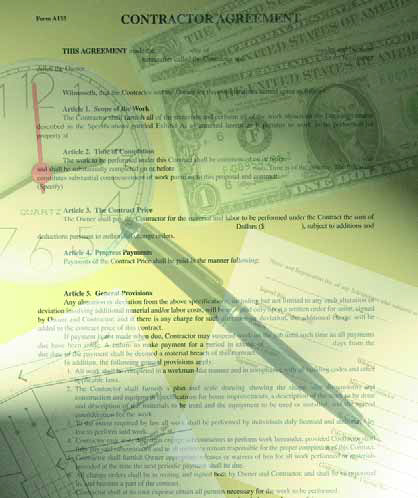business management
It seems that everyone’s talking about “sustainability” these days, with the usual thought being that, as exterior designers, good environmental stewardship must be one of our main missions. But what is sustainability? What do watershapers need to do to encompass this philosophy? As important, what does it mean to our clients, and where are they in all of this? According the numerous sources I’ve consulted, sustainability is defined as striving for the best outcome for both human and natural environments, now and well into the future. In other words, it’s about
Have you ever turned down a client who really wanted to work with you and you alone? It's a hard thing to do, which is why most of us have found ourselves at one time or another saying "yes" despite the fact that we believe something the clients want simply cannot be done or, more important, that we've developed serious doubts about them. Just at that point where we really need to sit them down and tell them to go away, many times we'll freeze - and here's the usual reason why: "If I tell them 'no,' then they'll just get someone else to do it and I'll lose the job!" Giving in to this fear of losing a project and letting apprehension guide our decisions in place of any faith we might have in our common sense or experience is
Have you ever turned down a client who really wanted to work with you and you alone? It's a hard thing to do, which is why most of us have found ourselves at one time or another saying "yes" despite the fact that we believe something the clients want simply cannot be done or, more important, that we've developed serious doubts about them. Just at that point where we really need to sit them down and tell them to go away, many times we'll freeze - and here's the usual reason why: "If I tell them 'no,' then they'll just get someone else to do it and I'll lose the job!" Giving in to this fear of losing a project and letting apprehension guide our decisions in place of any faith we might have in our common sense or experience is
Despite the axiom that "every client is a good client," we all know that some of them are wonderful to work with - and that dealing with others is a form of slow torture. I've always loved hearing the horror stories about bad customers that float around the watershaping trades: The telling and retelling of these nightmares (often with exaggerations as the stories travel from ear to ear) is often a treat, and I know I've had my share of therapeutic fun at the expense of a knucklehead or two. We don't generally hear quite so much about the good ones, but it's fair to say that most of us have lists of satisfied clients and that our experiences with them give us much of the motivation we have to stay in the business. What it boils down to is this: Each and every client is
I started my May 2001 column by expressing the belief that watershape designers should be paid for their designs in the same way interior designers and landscape designers are paid for theirs - and by indicating that lots of watershapers I've met are interested in knowing more about the mechanics of how this works. I put off addressing those issues last time because I saw a need to establish criteria for offering such services in the first place. In other words, there's much more to being a watershape designer than simply declaring yourself to be one, and I set up two dozen questions intended to clarify what I meant. Once you've answered those questions predominantly in the affirmative, once you've determined, through
















